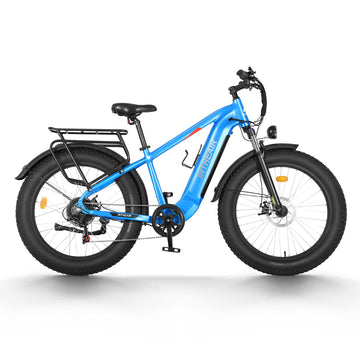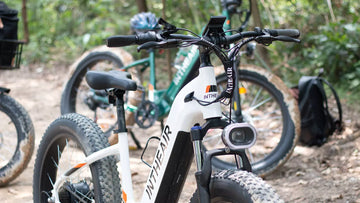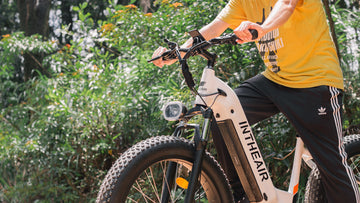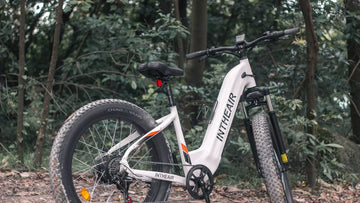Everything you need to know about electric Bike range
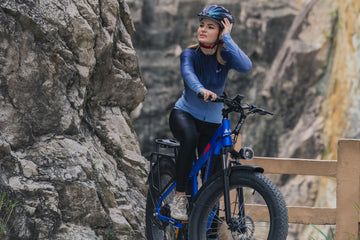
When considering the purchase of an electric bike, the range is one of the primary factors to consider. Although the range of an eBike largely depends on the battery's capacity, it is influenced by various factors such as battery capacity, motor performance, and riding conditions. Therefore, it is challenging to provide an exact figure.
What is eBike Range?
The range of an electric bike refers to the distance or time it can travel on a single battery charge. It is an essential metric to compare different eBike models because it directly affects the distance and time a rider can travel.
Factors Affecting eBike Range:
- Battery Capacity: Generally, a larger battery capacity allows for a higher range. The battery capacity is often measured in ampere-hours (Ah) or watt-hours (Wh).
- Riding Mode:Electric bikes usually offer multiple riding modes such as high-speed mode, economy mode, or pedal-assist mode. Different modes consume varying amounts of battery power, resulting in different ranges.
- Riding Conditions:The range of an eBike is also influenced by riding conditions such as road incline, wind resistance, rider weight, and riding speed. Challenging riding conditions can reduce the range of an electric bike.
- Battery Technology:Different Ebike battery technologies have varying energy densities and performance characteristics, which can impact the range of an eBike. For example, lithium-ion batteries generally have higher energy density and better performance compared to lead-acid batteries.
- Tire Pressure and Type:Tire pressure affects an eBike's battery range. The appropriate tire pressure reduces rolling resistance, minimizes the tire's contact area with the ground, and decreases friction, resulting in increased range. Conversely, low tire pressure increases friction between the tire and the ground, requiring more energy to propel the eBike forward and reducing the range.
- Battery Aging: As an eBike battery is used over time, its capacity and range gradually decrease. The battery undergoes charging and discharging cycles, leading to capacity degradation, increased internal resistance, and decreased charging efficiency. Regular battery maintenance is necessary to prolong the eBike's lifespan.
How much further can you go on an eBike compared to a regular bike?
Compared to a regular bike, an eBike can cover significantly more distance, mainly due to its pedal-assist mode. In general, the range of an eBike depends on its battery capacity and motor configuration.
A typical electric bike, when fully charged, can provide a range of 25-50 miles under normal conditions. With the assistance of pedal-assist mode, riders can easily travel even longer distances.
How long can a 750W electric bike last?
Most INTHEAIR Fat Tire Electric Bikes are equipped with a 750W rear motor that provides 85n.m of torque and can reach a top speed of 28MPH (45KM/H). The powerful motor consumes battery power at a faster rate compared to a 750W e-bike. A 1000W electric bike motor consumes even more battery power and requires a larger capacity battery to achieve longer range.

Assuming the e-bike is ridden on flat or moderately inclined terrain, the INTHEAIR Colts model, which is a 20*4" foldable fat tire electric bike, is equipped with a 48V 13Ah battery. Under normal conditions, it can achieve a range of 35-50 miles. The Colts model is well-suited for daily commuting, trips to town, and shopping due to its foldable frame, which allows for convenient storage and portability.
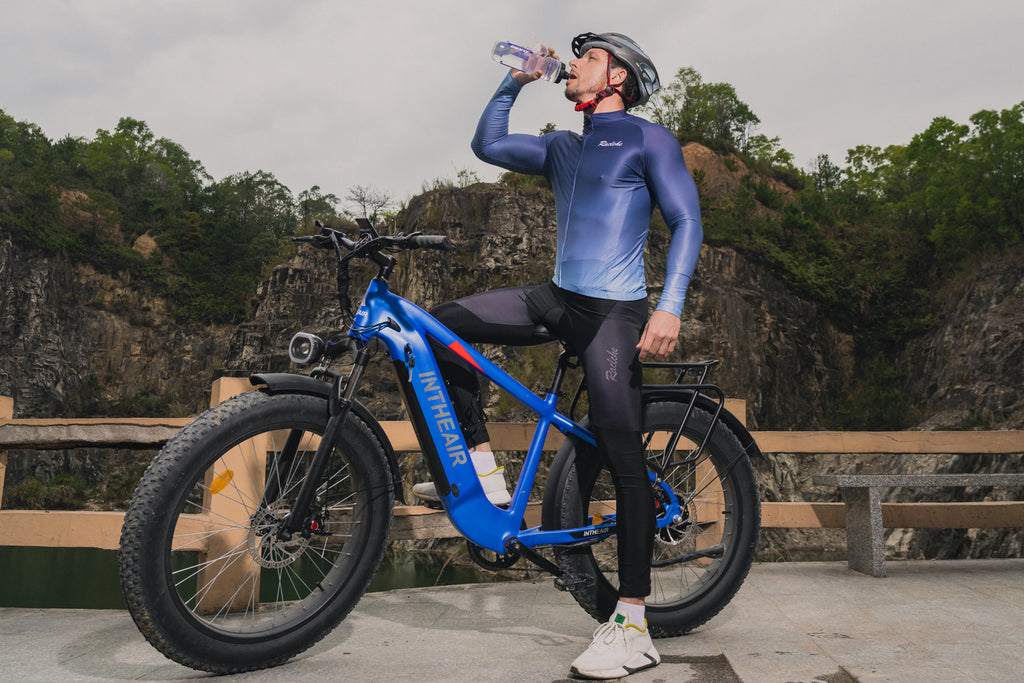
On the other hand, the INTHEAIR Rocket series electric bikes come with a 48V 14.5Ah battery, offering a normal range of 35-55 miles. The Rocket model features a 26*4.0" fat tire, making it the ideal choice for outdoor activities such as hunting, off-roading, and fishing.
How far can a 350W electric bike travel?
Most 350W electric bikes are primarily used for riding on flat urban roads, with a maximum speed of around 20MPH and a motor torque of 45N.M. In comparison to 750W e-bikes, these motors cannot provide enough power for rough mountainous terrain.

The INTHEAIR Cityrider is specifically designed for urban commuting. This model is equipped with a 350W motor, a 36V 10Ah lithium battery, and a maximum speed of 15-20MPH. The Cityrider can travel up to 25-35 miles on a full charge. If you are looking for an affordable electric bike for daily city commuting on flat roads and have a limited budget, the Cityrider's handlebar design is well-suited for comfortable urban riding. The handlebars of the Cityrider are designed in a swallow-shaped style, allowing for adjustments based on rider height and riding preferences.
However, it's important to note that these are ideal test results, and some riders may find that their actual riding distance doesn't match the expected range. The actual range of an electric bike can be influenced by factors such as rider weight, slope, wind, weight, and size.\
How can I check the battery capacity of an electric bike?
Every electric bike has its battery capacity indicated by the manufacturer, and this information can be found in the bike's description and manual. The battery capacity of an electric bike is typically measured in watt-hours (Wh). Sometimes, you may see the rated values of the e-bike battery listed in volts (V) and ampere-hours (Ah). For example, an electric bike might be labeled as having a 48V 10Ah battery. To convert volts and ampere-hours to watt-hours, you should multiply the voltage by the ampere-hours.
How can I enhance the battery range of an electric bike?
We all want our e-bikes to have longer battery range, but how can we achieve that with a fixed battery capacity? The key is to develop good riding habits.
Use pedal-assist mode: Most electric bikes come with pedal-assist mode, which allows you to ride with partial assistance, making it easier compared to a traditional bike. This helps improve battery range and overall battery life.
Gentle use of the throttle: In Europe, pedal-assist mode is the norm, while in the US, throttle control is often a standard feature in addition to pedal-assist. Using the throttle provides more power to the rider, but it also depletes the bike's battery and reduces the overall range. Particularly when going uphill, it may be necessary to use the throttle more for additional power, but you should be aware that it significantly increases power consumption. On the other hand, when going downhill, riders can lightly use the throttle and rely on inertia to assist the e-bike. By reducing reliance on the throttle, you naturally find yourself pedaling more, resulting in longer riding distances.
Maintain proper tire pressure: Regularly check your tire pressure and ensure it is not too low. When the tire pressure is too low, you will notice that your e-bike's speed is slower and it consumes battery power more quickly. Keeping your electric bike's tire pressure within the recommended range allows for better performance. For 264-inch electric bike tires, the recommended tire pressure range is typically between 8 and 20 PSI (pounds per square inch). For 204-inch electric bike tires, the range is usually between 10 and 30 PSI. However, the specific optimal tire pressure should be adjusted based on the factors mentioned above. If you're unsure about the optimal tire pressure, it's best to consult the manufacturer's recommendations or seek advice from a professional bike technician.
In conclusion, it is important for riders to be aware of the limitations of an electric bike's battery performance to avoid running out of battery. By taking appropriate precautions, you can extend the usage time of your e-bike battery and enjoy longer, more fulfilling rides.

